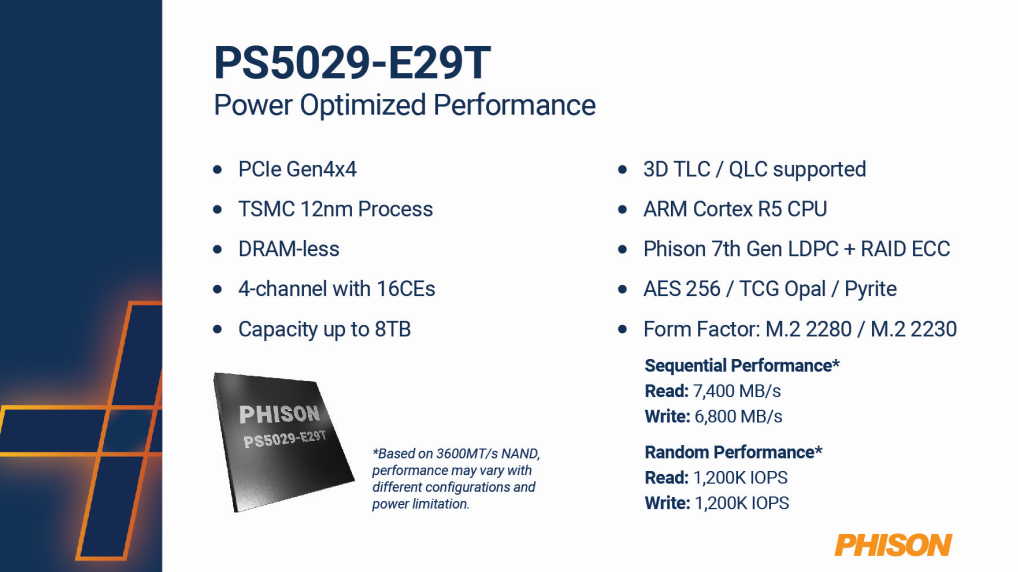
During the Future of Memory and Storage 2024 (FMS 2024) conference (previously Flash Memory Summit), Phison debuted its latest Gen4 SSD controller, the Phison PS5023-E29T. This SSD controller is targeted at upcoming NVMe Gen4 drives in the M.2-2280 and M.2-2230 form factors and is now nearly the fastest SSD controller in Phison's lineup, beating all of them in sequential read performance and only beaten by the enterprise-grade PS5020-X1 controller for U.2 and U.3 SSDs, which has a slight advantage in sequential write performance and (of course) exponentially higher maximum capacity.
Phison PS5029-E29T SSD Controller Specifications vs Other Phison PCIe Gen 4 Controllers
In the overall lineup, it seems clear that the Phison PS5029-E29T SSD controller is meant to occupy the new high-end for M.2 NVMe SSDs, particularly those in "standard" size (M.2-2280) and the low-profile M.2 drives (M.2-2230) that have become more commonplace in laptops, mini PCs, and handheld PCs like Steam Deck.

We previously covered the very similar Phison PS5027-E27T in January, which also used the TSMC 12nm process to target similar devices but is slightly slower than the newer controller, managing only 6,700 MB/s write compared to the E29T's faster 6,800 MB/s write speeds, though read speeds are identical at 7,400 MB/s. Of note for Steam Deck and its class of handheld PCs is that these faster Gen4 M.2-2230 NVMe drives will only be helpful in devices that actually support NVMe Gen4 — as the Steam Deck and many others are still on Gen3.
Finally, the Phison PS5029-E29T also utilizes a DRAM-less design like its E27T predecessor and is driven by an ARM Cortex R5 CPU. The E29T supports both 3D TLC and 3D QLC NAND, with TLC (Triple-Level Cells vs Quad-Level Cells), of course, being faster and offering greater durability. NAND flash speeds on the E29T will top out at 3,600 MT/s either way, though, just like the E27T.







